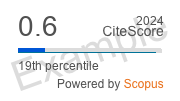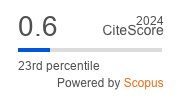Long-term outcomes in patients with type 1 and type 2 myocardial infarction (data from a single-center register study)
https://doi.org/10.29001/2073-8552-2024-39-1-202-209
Abstract
Aim: To study the annual outcomes of patients with a confirmed diagnosis of myocardial infarction (MI), depending on its type.
Material and Methods. Of the 1,325 hospitalized patients, 1,293 (97.5%) were diagnosed with acute coronary syndrome; the rest had extra-cardiac causes of chest pain. Follow-up included examinations of patients in the hospital and interviewing by phone or email in 12 months after discharge. All patients with MI were tested for the presence of personality type D. After 12 months of follow-up, the total number of patients diagnosed with MI was 255 (92.1%) patients [180 (70.5%) patients with MI1, 75 (29.5%) patients with MI2].
Results. After 12 months of follow-up, in the general group of patients complications developed in 53 (20.7%) patients (27 (15.0%) patients in the IM1 group and 26 (34.6%) patients in the IM2 group). Overall mortality and the frequency of repeat- ed hospitalizations for heart failure were higher in MI2 compared to MI1 [8 (10.6%) vs. 2 (1.1%) (p = 0.001) and 9 (12.0%) vs. 8 (4.4%) (p = 0.03), respectively]. The main predictors of adverse events in patients with MI2 were: obesity, p = 0.005; diabetes mellitus, p = 0.006; two-vessel lesion, p = 0.001; three-vessel lesion, р = 0.001; low adherence to drug therapy (< 6 points) on the Morisky-Green scale, p = 0.007; personality type D, p = 0.040. In patients with MI1, the main predictors of adverse events were: obesity, p = 0.019; male, p = 0.009. There were no statistically significant differences in both groups in the frequency of mortality from MI, the development of recurrent MI, as well as complications such as subacute/late stent thrombosis and restenosis in the stent.
Conclusion. In patients with MI2, compared with MI1, after 12 months of follow-up the indicators of total mortality (10.6% vs. 1.1%) and repeated hospitalizations due to decompensation of heart failure (12% vs. 4.4%) are higher.
About the Authors
V. I. KinashRussian Federation
Vladimir I. Kinash, X-ray Endovascular Surgeon, District Cardiology Hospital of the Diagnostic and Cardiovascular Surgery Center; Graduate Student, Department of Cardiology, SurSU
69/1, Lenin str., Surgut, 628416, Khanty-Mansi Autonomous Okrug – Yugra,
1, Lenin str., Surgut, 628412, Khanty-Mansiysk Autonomous Okrug – Yugra
V. V. Kashtalap
Russian Federation
Vasily V. Kashtalap, Dr. Sci. (Med.), PhD, Associate Professor, Head of Clinical Cardiology Department, Research Institute for Complex Issues of Cardiovascular Diseases; Professor, Department of Cardiology and Cardiovascular Surgery of Kemerovo State Medical University
Academician Barbarash boulevard, 6, Kemerovo, 650002,
22а, Voroshilova str., Kemerovo, 650000
D. A. Fedorov
Russian Federation
Dmitry A. Fedorov, Cand. Sci. (Techn.), PhD, Surgut State University; Associate Professor, Head of the Department of Computer Science and Computer Engineering, Deputy Director of the Polytechnic Institute
1, Lenin str., Surgut, 628412, Khanty-Mansiysk Autonomous Okrug – Yugra
A. S. Vorobiev
Russian Federation
Anton S. Vorobiev, Cand. Sci. (Med.), PhD, Associate Professor, Cardiologist, District Cardiology Hospital of the Diagnostic and Cardiovascular Surgery Center; Associate Professor, Cardiology Department, Senior Research Scientist, Scientific Educational Center, Surgut State Medical Institute of Higher Education, SurSU
69/1, Lenin str., Surgut, 628416, Khanty-Mansi Autonomous Okrug – Yugra,
1, Lenin str., Surgut, 628412, Khanty-Mansiysk Autonomous Okrug – Yugra
I. A. Urvantseva
Russian Federation
Irina A. Urvantseva, Cand. Sci. (Med.), PhD, Associate Professor, Medical Director, District Cardiology Hospital of the Diagnostic and Cardiovascular Surgery Center; Head of the Cardiology Department, Medical Institute, SurSU
69/1, Lenin str., Surgut, 628416, Khanty-Mansi Autonomous Okrug – Yugra,
1, Lenin str., Surgut, 628412, Khanty-Mansiysk Autonomous Okrug – Yugra
L. V. Kovalenko
Russian Federation
Lyudmila V. Kovalenko, Dr. Sci. (Med.), PhD, Professor, Head of the Medical Institute, Head of the Department of Pathophysiology and General Pathology, Medical Institute
1, Lenin str., Surgut, 628412, Khanty-Mansiysk Autonomous Okrug – Yugra
References
1. Thygesen K., Alpert J.S., Jaffe A.S., Chaitman B.R., Bax J.J., Morrow D.A. et al. Fourth universal definition of myocardial infarction 2018. J. Am. Coll. Cardiol. 2018;72:2231–2264. DOI: 10.1016/j.jacc.2018.08.1038.
2. Raphael C.E., Roger V.L., Sandoval Y., Singh M., Bell M., Lerman A. et al. Incidence, trends, and outcomes of Type 2 myocardial infarction in a community cohort. Circulation. 2020;141(6):454–463. DOI: 10.1161/CIRCULATIONAHA.119.043100.
3. Putot A., Jeanmichel M., Chague F., Manckoundia P., Cottin Y., Zeller M. Type 2 myocardial infarction: A geriatric population-based model of pathogenesis. Aging Dis. 2020;11(1):108–117. DOI: 10.14336/AD.2019.0405.
4. Sato R., Sakamoto K., Kaikita K., Tsujita K., Nakao K., Ozaki Y. et al. Long-term prognosis of patients with myocardial infarction Type 1 and Type 2 with and without involvement of coronary vasospasm. J. Clin. Med. 2020;9(6):1686. DOI: 10.3390/jcm9061686.
5. Rafiudeen R., Barlis P., White H.D., van Gaal W. Type 2 MI and myocardial injury in the era of high-sensitivity troponin. Eur. Cardiol. 2022;17:e03. DOI: 10.15420/ecr.2021.42.
6. Kinash V.I., Vorobyev A.S., Urvantseva I.A., Kovalenko L.V., Kashtalap V.V. Features of clinical and anamnestic characteristics and structure of hospital complications in patients with various types of myocardial infarctions. RMZH. 2022;9:2–6. (In Russ.).
7. Curcio F., Gerundo G., Sasso G., Panicara V. et al. Type 2 myocardial infarction: is it a geriatric syndrome? Aging Clin. Exp. Res. 2020;32(5):759–768. DOI: 10.1007/s40520-019-01452-8.
8. Merlo A.C., Bona R.D., Ameri P., Porto I. Type 2 myocardial infarction: a diagnostic and therapeutic challenge in contemporary cardiology. Intern. Emerg. Med. 2022;17(2):317–324. DOI: 10.1007/s11739-021-02920.
9. Han X., Jeong M.H., Bai L., Ahn J.H., Hyun D.Y., Cho K.H. et al. Other KAMIR-NIH Registry Investigators. Long term clinical outcomes of Type 1 vs. Type 2 myocardial infarction in patients who underwent angiography: data from the Korea acute myocardial infarction-national institute of health registry. Cardiovasc. Diagn. Ther. 2022;12(1):55–66. DOI: 10.21037/cdt-21-434.
10. Coscia T., Nestelberger T., Boeddinghaus J., Lopez-Ayala P., Koechlin L., Miró Ò.; for the APACE Investigators. Characteristics and outcomes of Type 2 myocardial infarction. JAMA Cardiol. 2022;7(4):427–434. DOI: 10.1001/jamacardio.2022.0043.
11. Raphael C.E., Roger V.L., Sandoval Y., Singh M., Bell M., Lerman A. et al. Incidence, trends, and outcomes of Type 2 myocardial infarction in a community cohort. Circulation. 2020;141(6):454–463. DOI: 10.1161/CIRCULATIONAHA.119.043100.
12. Chapman A.R., Sandoval Y. Type 2 myocardial infarction: Evolving approaches to diagnosis and risk-stratification. Clin. Chem. 2021;67(1):61– 69. DOI: 10.1093/clinchem/hvaa189.
13. Oblavatsky D.V., Boldueva S.A., Solovyova M.V., Vinnichuk S.A., Mikhailov R.R. Prevalence of Type 2 myocardial infarction in the structure of mortality according to the data of a multidisciplinary hospital for 7 years. Cardiology. 2020;60(6):76–83. (In Russ.). DOI: 10.18087/cardio.2020.6.n896.
14. Merlo A.C., Bonа R.D., Ameri P., Porto I. Type 2 myocardial infarction: a diagnostic and therapeutic challenge in contemporary cardiology. Intern. Emerg. Med. 2022;17(2):317–324. DOI: 10.1007/s11739-021-02920-8.
15. McCarthy C.P., Kolte D., Kennedy K.F. Vaduganathan M., Wasfy J.H., Januzzi J.L. Jr. Patient characteristics and clinical outcomes of Type 1 versus Type 2 myocardial infarction. J. Am. Coll. Cardiol. 2021;77(7):848– 857. DOI: 10.1016/j.jacc.2020.12.034.
16. Sumin A.N., Shcheglova A.V. Is the concept of Type D personality a component of personalized medicine or a prognostic factor in the treatment of cardiovascular diseases? Russian Journal of Cardiology. 2020;25(9):3996. (In Russ.). DOI: 10.1560-4071-2020-3996.
17. Raykh O.I., Sumin A.N., Korok E.V. The influence of personality Type D on cardiovascular prognosis in patients after coronary artery bypass grafting: Data from a 5-year-follow-up study. Int. J. Behav. Med. 2022;29(1):46–56. DOI: 10.1007/s12529-021-09992-y.
18. Yamaguchi D., Izawa A., Matsunaga Y. The association of depression with Type D personality and coping strategies in patients with coronary artery disease. Intern. Med. 2020;59(13):1589–1595. DOI: 10.2169/internalmedicine.3803-19.
19. Singh A., Gupta A., DeFilippis E.M., Qamar A., Biery D.W., Almarzooq Z. et al. Cardiovascular mortality after Type 1 and Type 2 myocardial infarction in young adults. J. Am. Coll. Cardiol. 2020;75(9):1003–1013. DOI: 10.1016/j.jacc.2019.12.052.
Review
For citations:
Kinash V.I., Kashtalap V.V., Fedorov D.A., Vorobiev A.S., Urvantseva I.A., Kovalenko L.V. Long-term outcomes in patients with type 1 and type 2 myocardial infarction (data from a single-center register study). Siberian Journal of Clinical and Experimental Medicine. 2024;39(1):202-209. (In Russ.) https://doi.org/10.29001/2073-8552-2024-39-1-202-209





.png)





























